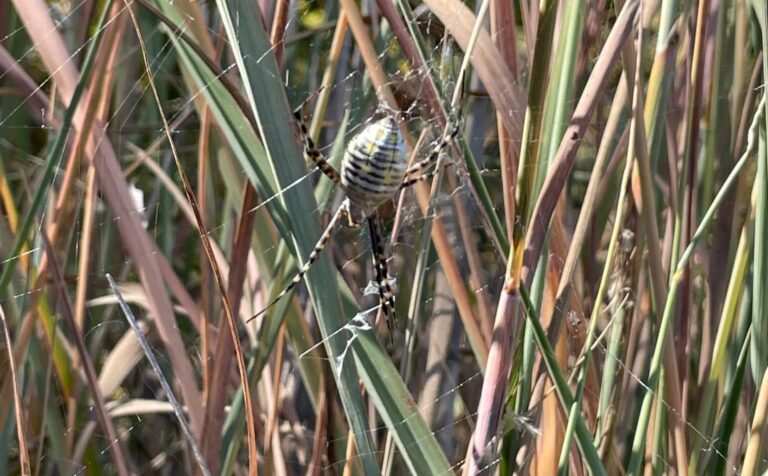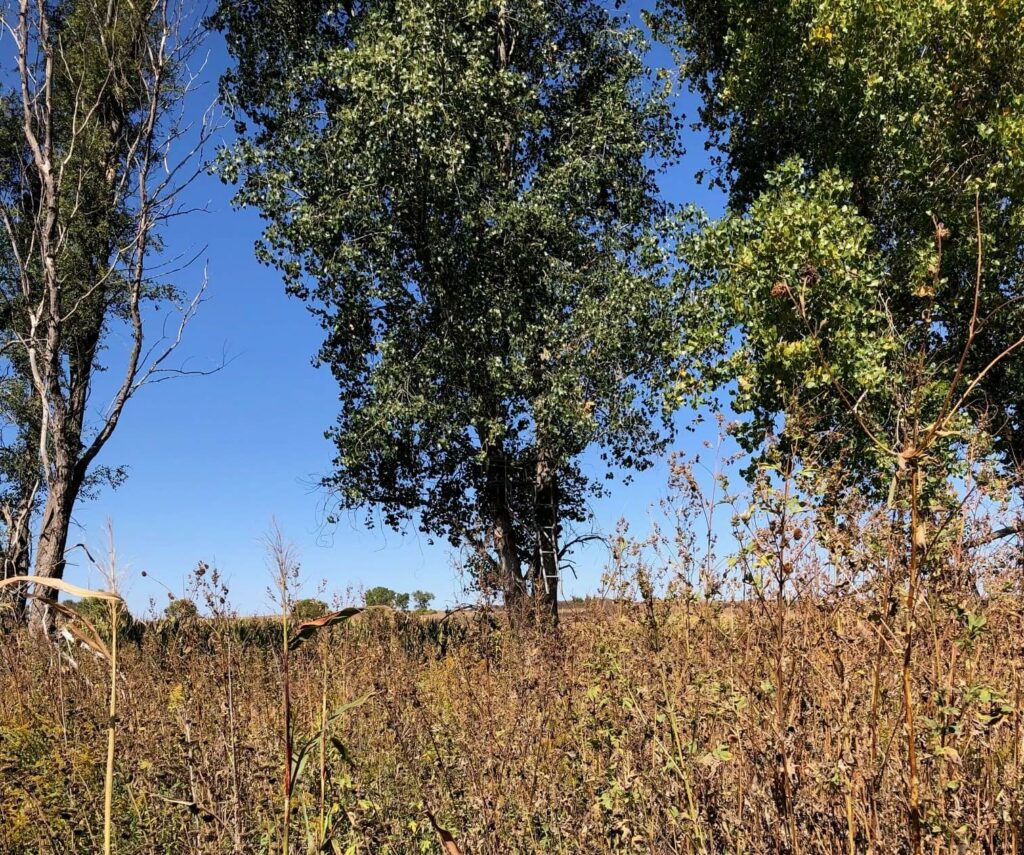Introduction
This week was the start of my states general firearm deer season. I was one of the many hunters flocking to public land in the brisk hours of the morning in hopes to see some deer activity. I ended up seeing many does (female deer) during my 12 hours in the field, but no bucks (male deer). Throughout the time I spent on the field edges, I recall looking at the land I was on and reflecting on how it was managed in comparison to other pieces of land I have seen across the state. Anyone who has hunted or developed any land for the purpose of hunting knows that there is always something that could be improved. I will list 4 ways every parcel of public land can be improved in the Midwest.
I felt that the land I was on was dead and relatively void of life despite the large size of land and seemingly high amounts of water access and food plots. Sure, you can occasionally see squirrels, crow, duck geese, rabbits, and more, but they usually don’t stay long. I would argue that these populations are few and far in between on this land too. These observations lead me to invest some time to reflect on what I observed that day, and in years past as to see what issues with land management could be impacting various species populations.
I want to compare modern day management with how Indigenous peoples cared for the land with the intention of creating rich hunting opportunity as they relied on various game animals for their survival. Different perspectives are needed when managing land as science is showing the blunders of previous conservation efforts. I will be modest and only list 4 ways that public land can be improved based on my observations in the field, research, and education.
1. Reduction of Food Plots
Most people hunting public land in the Midwest are aware that the creation and reliance of food plots is high for those who manage for deer and other big game animals. Many people defend their use of feeders/bait to hunt by comparing the strategy to someone hunting on the edge of a corn field or soybean field, though I would argue that is still up for debate. For those of my readers who are not hunters a food plot is what it sounds like, an area devoted to the creation of food, typically consisting of either grain (corn, oats, sorghum, etc.) or legumes such as soybeans. Typically, large amounts of the land are taken up by these food plots, with a few areas left along edges to be overgrown for bedding areas.
Much of the food plots are grown using modern conventional agriculture methods which consist of plowing fields, as well as applying synthetic fertilizers and toxic herbicides/pesticides. This removes a lot of the praise that wild game gets as being “organic” and “wild” when compared to domestic livestock products as wild game animals are not raised in the same conditions/circumstances, they end up eating a lot of the same things based on the standing of today’s landscape.
A food plot is intended to give deer and other wildlife a higher access to food/nutrients over a smaller amount of space. Many people consider modern food plots as an effective way to keep game animals coming back to a certain piece of land, though I would argue that there is more to game/land management than food. As we all know there is some truth to this belief as I will admit that animals are like us and do tend to lean on easier ways of obtaining the basic necessities of survival.
Many land managers are starting to shift their mindset away from over prioritizing food plots and are beginning to start implementing in space for more wild browse/forage plants, or get rid of “traditional” food plots and stick solely to wild browse plants. Deer and other wildlife did just fine without added corn, grain, and soy to their diets for thousands of years, I am sure that it is not a requirement to keep them within a given area.
Many people and businesses promote food plots as a way to bolster your wildlife populations without noting that these animals rely on native browse throughout the year rather than annual food plots. Many people think you can supplement your way through a dead ecosystem, but this is not the case. It is easy to speculate that many people promote food plots as an easy/quick way for people to get the results that they want. This also creates a market audience to sell more products to in hopes of a healthier population. You don’t have to look far online to realize that prioritizing native browse is far superior.
I will list some very informative links I used for my research in regards to the issue:
Old-Field Management– Craig Harper and John Gruchy
Deer: Food and Water Needs -Missouri Department of Conservation
THE WHITE-TAILED DIET: MORE THAN JUST ACORNS AND CORN – Kyle Johnson
Enhancing White-Tailed Deer Habitats on Your Property: Food Plots – Robert A. Pierce II, Emily Flinn, Paul Lowry and Brad Mormann
2. Fire
Fire has been a tool used for land management and wildlife habitat for thousands of years. It is a common misconception that when Europeans entered what is now the United States, they were met with lush, virgin wilderness untouched by man… this is false. The indigenous peoples have been managing this land for thousands of years with goals to maximize wildlife habitat/populations as they relied on them for a food source.
Before colonization of the Midwest there were many natural wildfires that occurred. The fires were beneficial for native ecology as they promoted new growth, cleared out heavy brush, and deposited minerals and nutrients back into the soil. People were soon to pick up on the benefits associated with fires and used the tool to help manage certain areas for better hunting/habitat.
Not only do prescribed burns help with preventing greater scale fires, but they also help create nesting habitat for many birds, while creating habitat for native pollinators. Some species of plants actually require fire for their seeds to germinate within the seed bank in the soil. Prescribed burns help remove invasive plants too, which is a more modern issue, but it is nice to note.
A lot of modern day “habitat managers” will use some form of herbicide/glyphosate to spot spray and remove problem plants/patches to create a similar impact to that of fire. I advocate against using herbicide as not only is it toxic to yourself and the environment/ecosystem long term, but it also isn’t a fool proof solution. A lot of the plants you are spraying to remove are invasive plants that are brought in via people, wind, birds, water, or other animals. It is unlikely that your efforts will do much long term impact if you are not continuously spraying or burning annually. Unless you plan on spot spraying your land regularly, I feel that fire is the way to go, don’t look at herbicides unless it is your LAST option.
3. Restoring Native Ecosystems
With the use of fire and realization that acres of food plots can’t make up for native browse you are now ready to step away from the modern mainstream views on habitat management. There is no reason to plant most of a property with food plot crops. I have found huge bucks and does scattered throughout corn plots during the summer and early fall when corn is still in the milk stage or drying process. This is due to the cover the stalks provide mainly and ease of food access. Come late fall and early winter. The corn is cut and the deer are pushed to the brushy edges or off the property entirely due to inadequate cover or space and you are left with a huge empty field that deer may come back to feed on in the evening.
Why should we be limited to the edges of a food plot field when we could be utilizing more native cover and edges in the middle of fields as to create even more habitat/edges and bedding/nesting area for more wildlife? As I stated in my previous posting discussing 3 reasons why pheasant populations are declining this is one of the biggest issues.
The more effort one puts into restoring a native ecosystem in that area the more return of investment they will gain as time goes on. Think about it, you will be bringing in not only housing, but staple food sources for the animals. Over time and continued efforts land will flourish.
4. Thinking of Habitat on a Larger Scale

Banded garden spider (Argiope trifasciata) found on public land
It is ignorant to manage land with only one species in mind. Nature doesn’t work like that. Nothing is ever black and white as we all know. To have a great population of one species requires a network or web of many other species. You can’t expect to plant a food plot and cut all the brush and cover down with the expectation that deer will love it on that parcel of land. If we managed public land with a more broad approach in regards to biodiversity and species. We would have bountiful, rich areas that could sustain numerous harvests from a single location.
Understanding that everything we do has a long term consequence that can be good, bad, or neutral is important. It is time we break the age old bad habits of trying to supplement our way out of improper land management and double down on actually regenerating the land and native ecosystem that once existed even if it means removing hunting grounds temporarily so that the hunting could be improved for us or future generations.
Conclusion
Don’t get it wrong, I am thankful for the access to public land that I have in my state and in the Midwest, but I think it could be managed better from a state and federal perspective. I understand that the ways biologist/managers are currently managing the land is easy and relatively “risk free”, but I could only imagine how much greater these areas could be if they were managed properly for maximum biodiversity and longevity.
I personally am not in love with hunting the edges of corn fields and would like to see greater improvement to the land. If we were to promote these ideas to the public I would argue that there would be greater support and donations/funding from non-hunting groups as that the overall image of hunting shifts within non-hunting circles from blood hungry people who just want to reduce populations to that of a true conservationist who cares about the land, air, water, and native landscape/organisms within a given area.
I will end this week’s blog article with a reminder that in order to receive a gift, you must be willing to give a gift. Our relationship with the Earth is no different. If we just continue to take and not give back generously, we will soon deplete things which cannot be bought back or regrown within a year’s time. It is important to remember to think long term in regards to land management and view our natural resources with a sense of human empathy rather than a materialistic perspective.
